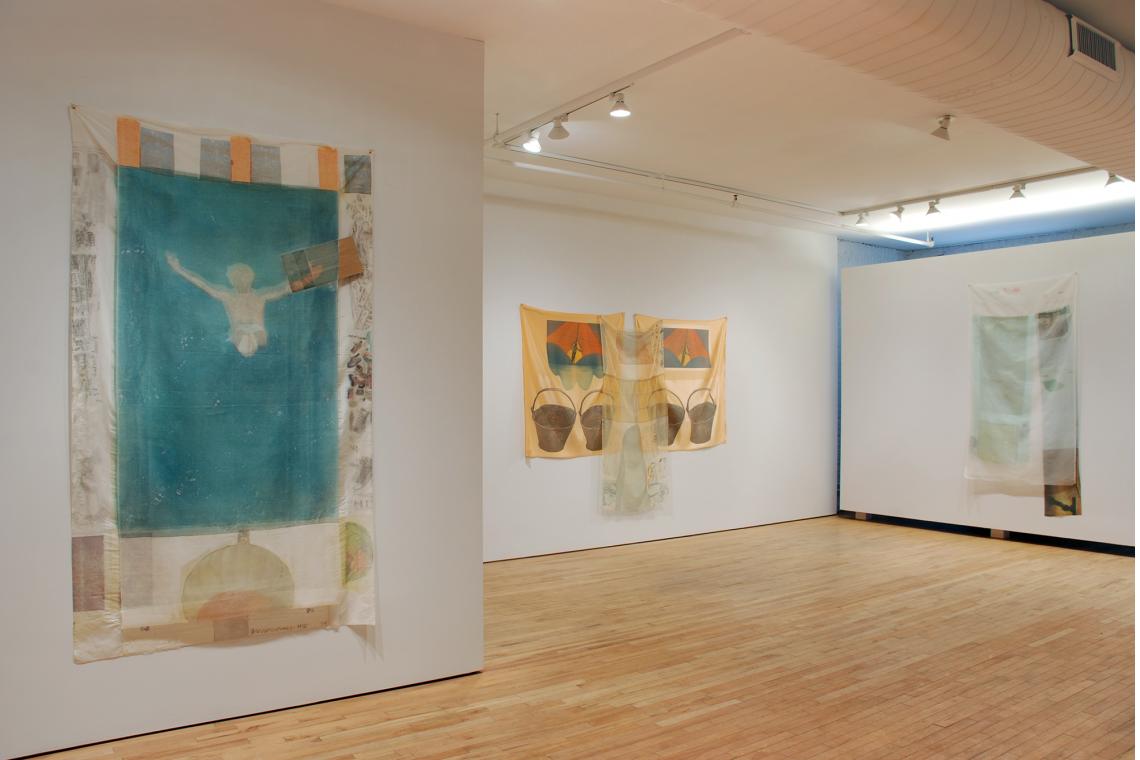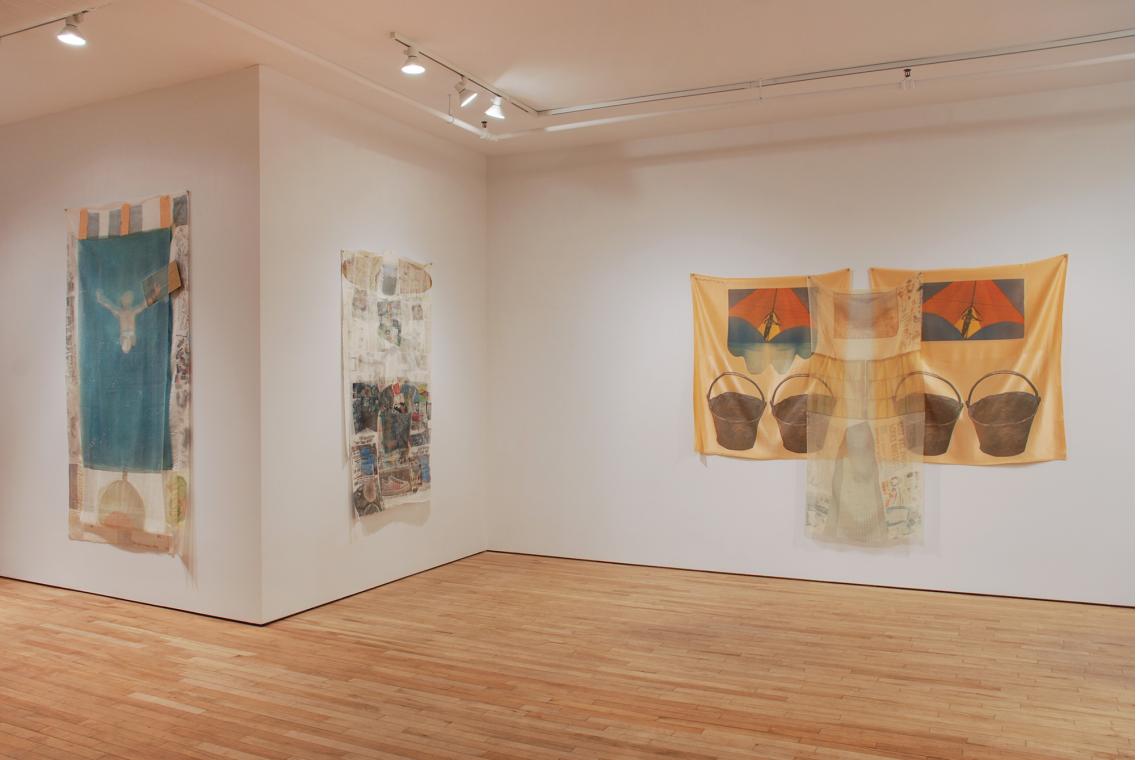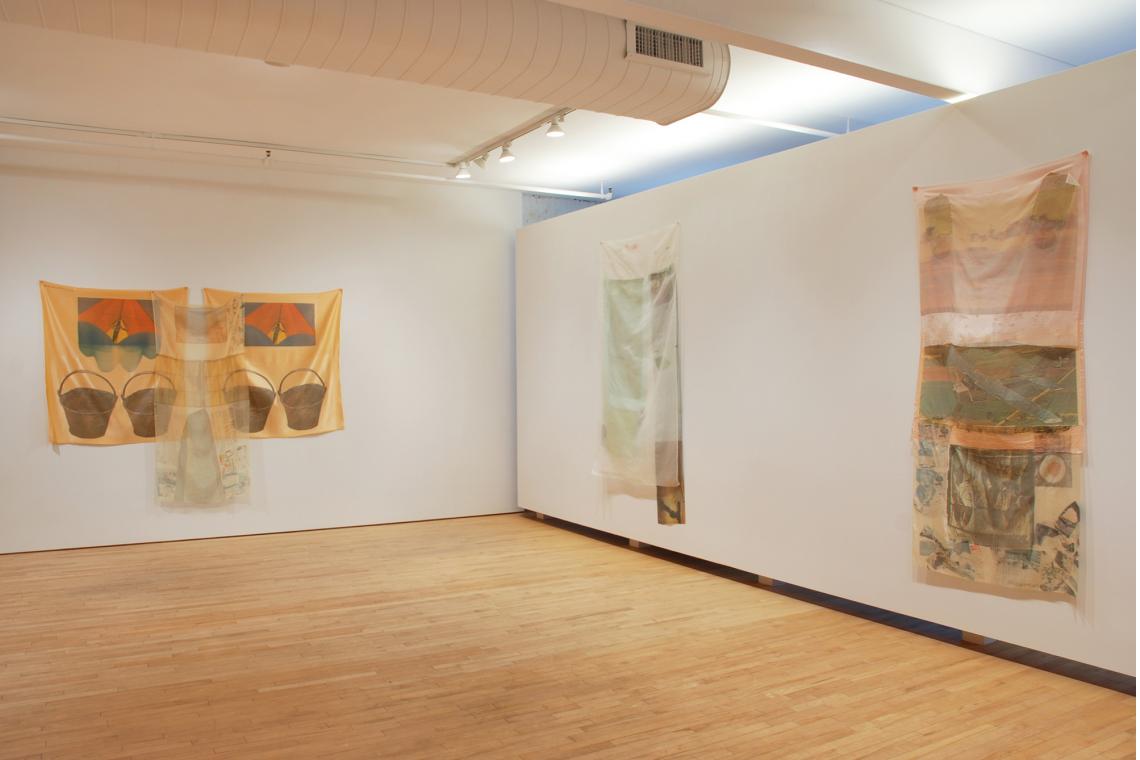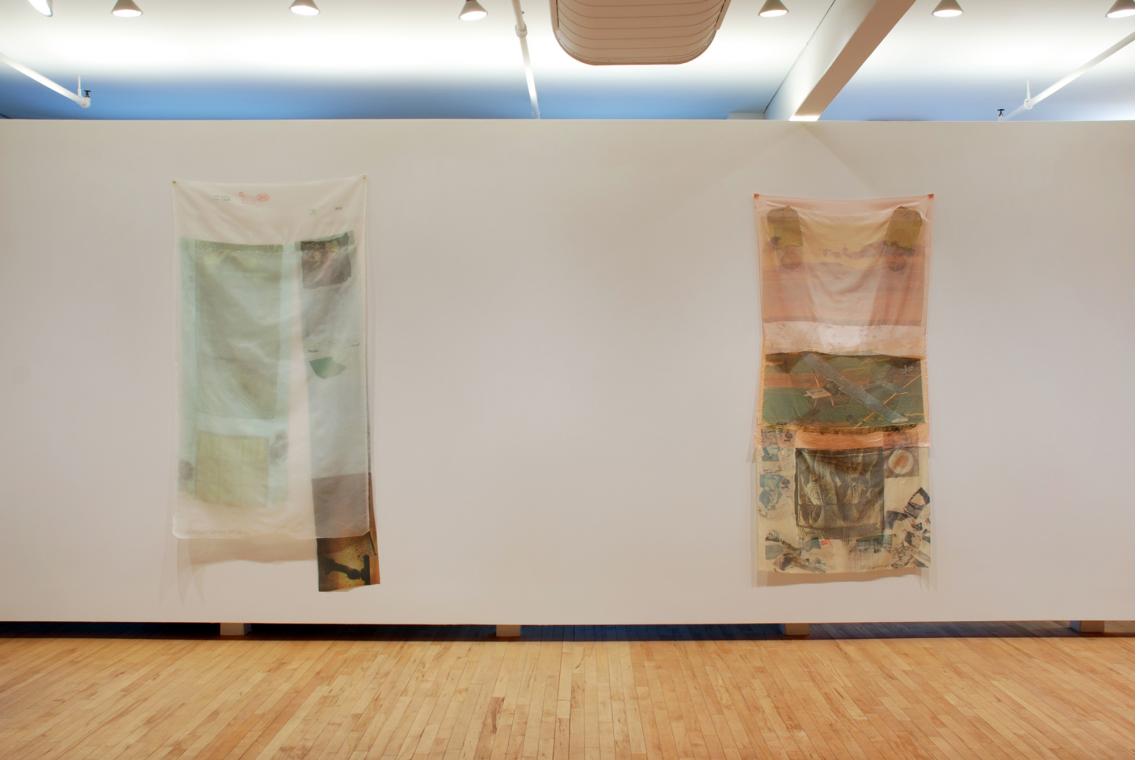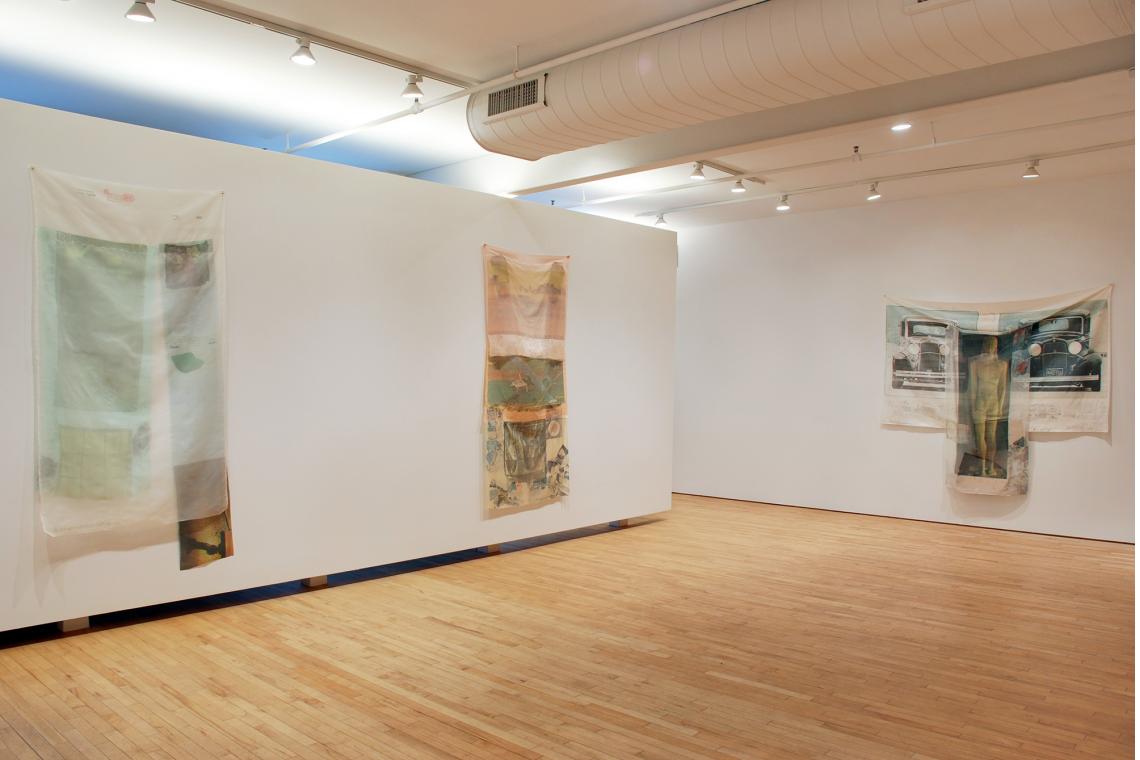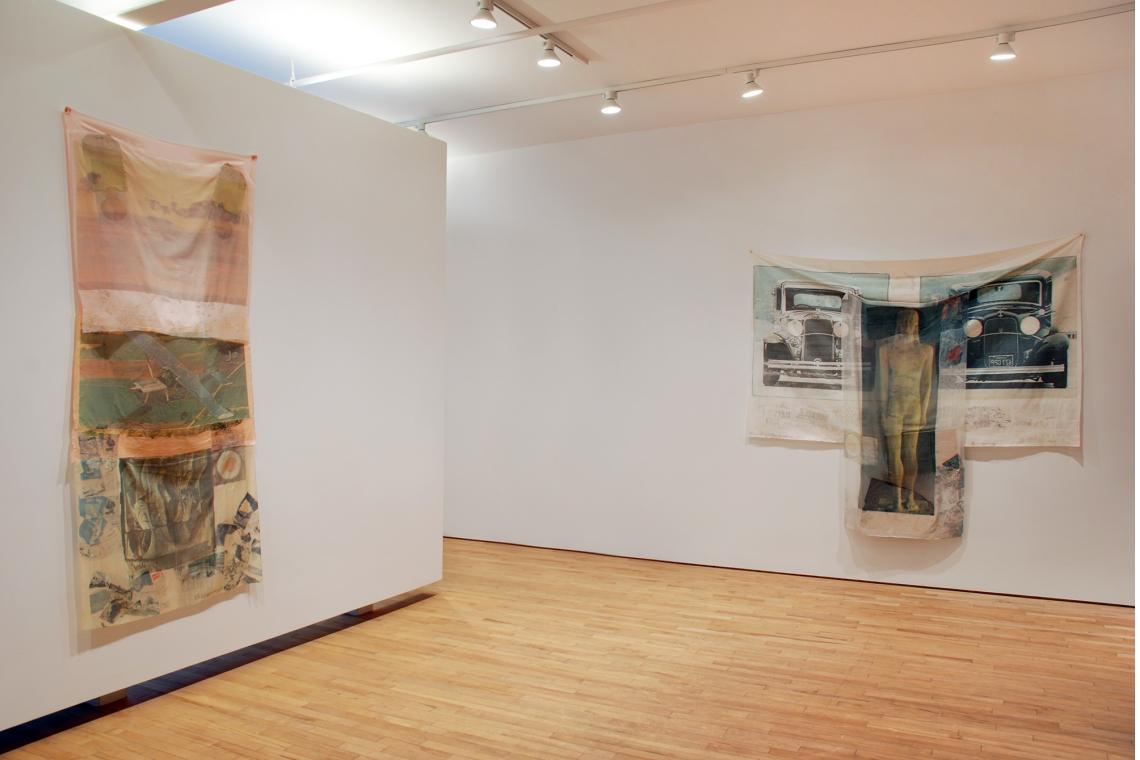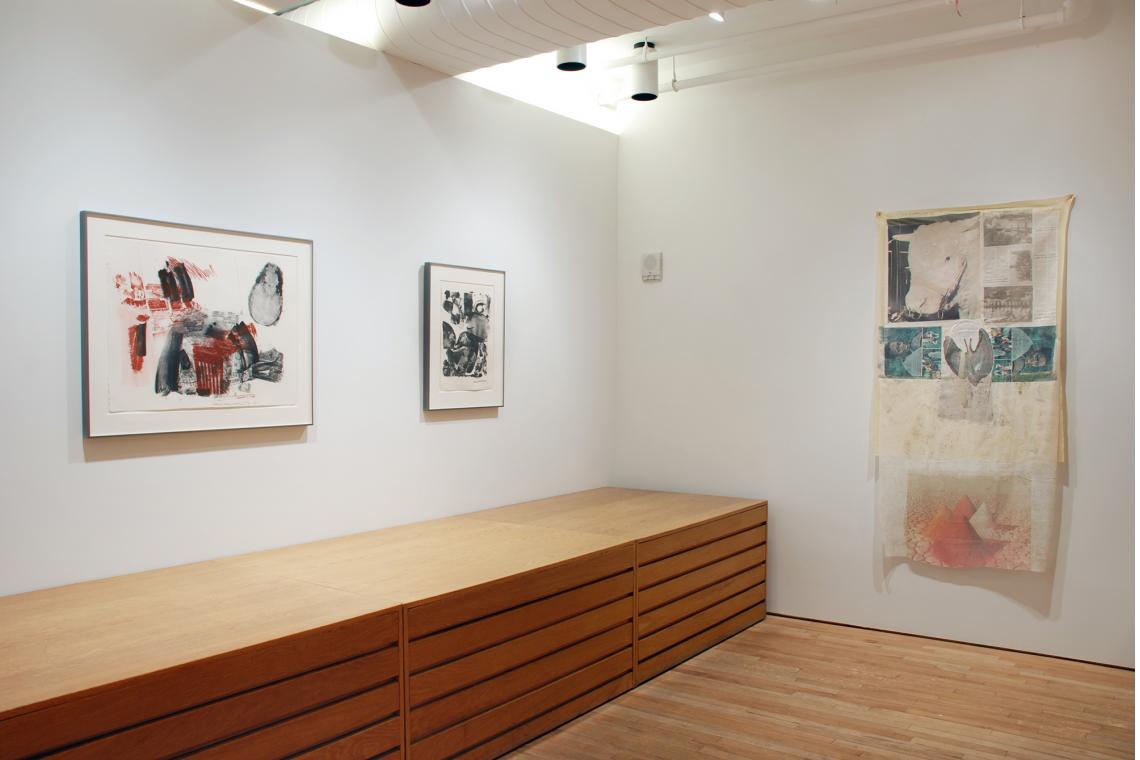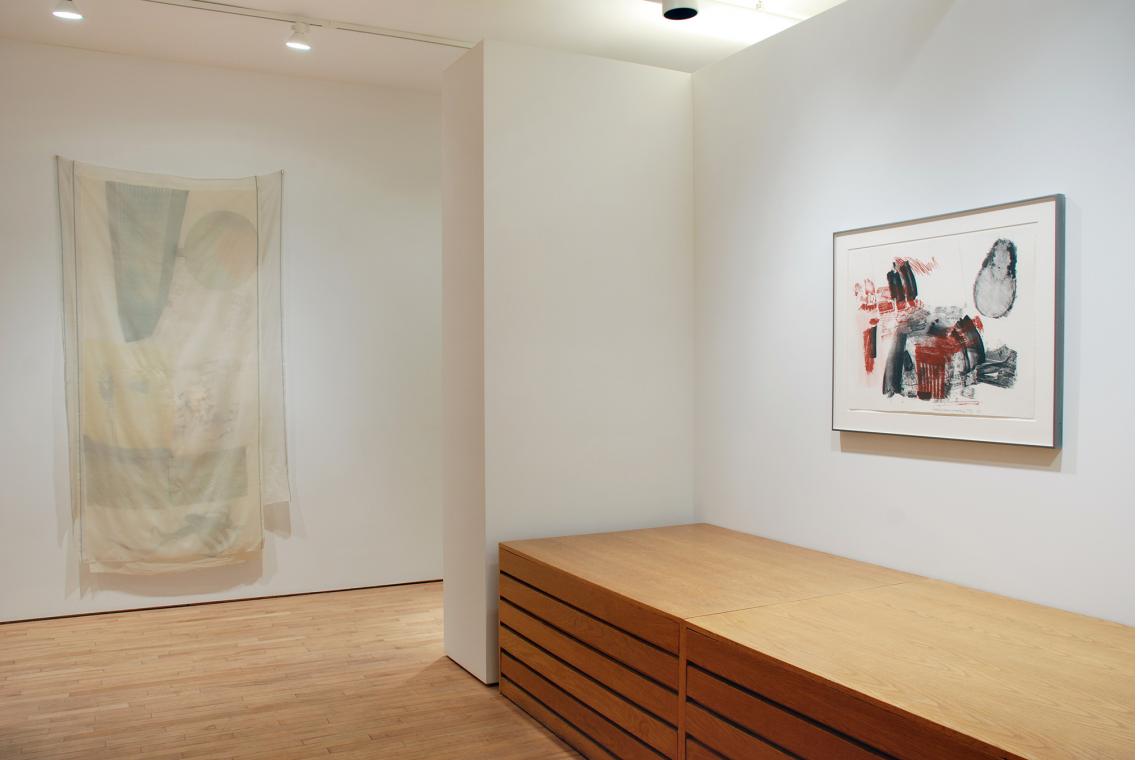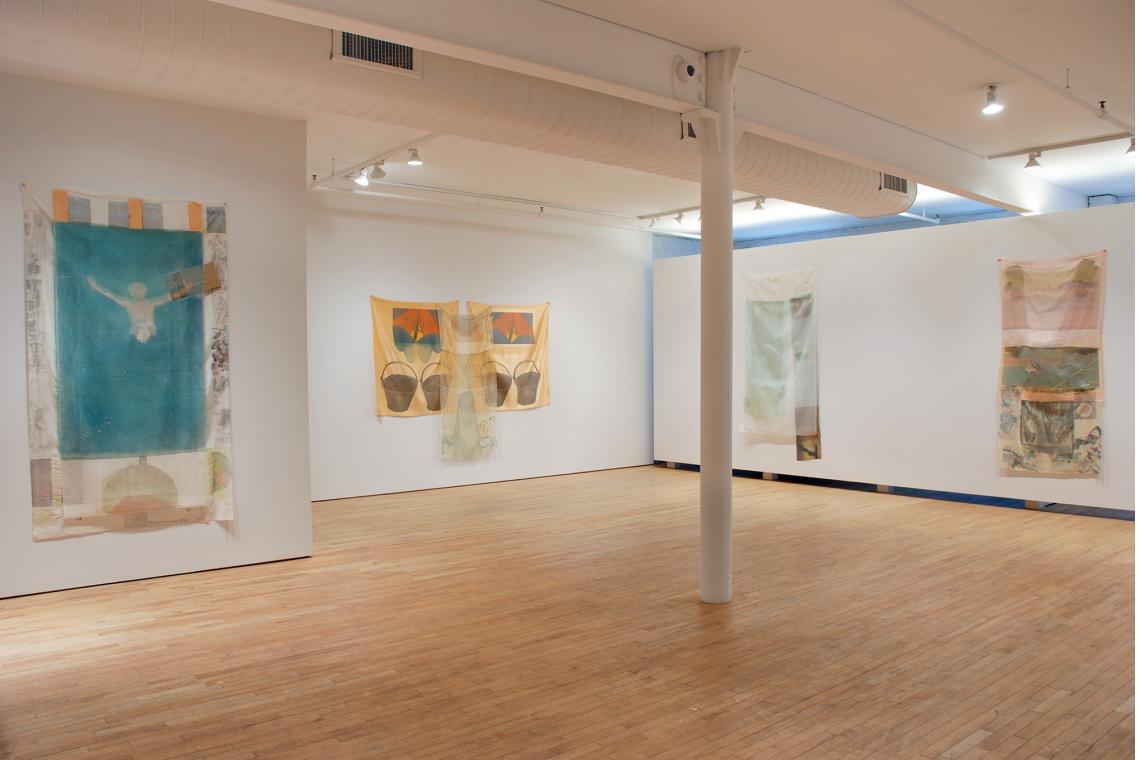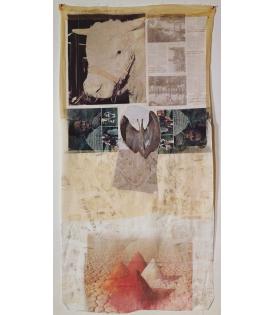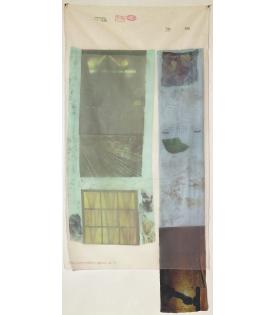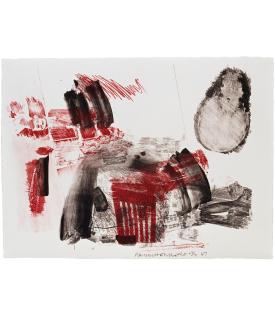Click here to view Workshop Images by Sidney Felsen of Robert Rauschenberg at work.
Gemini G.E.L. at Joni Moisant Weyl is pleased to present a survey of Robert Rauschenberg’s stunningHoarfrost Editions. Printed and collaged on gossamer silk satin and chiffon, these eight multiples were published in 1974 by Gemini G.E.L., the Los Angeles-based artists’ workshop. Rarely presented as a complete series since their creation, this is the first time all eight have been exhibited together in our gallery.
With his first visit in 1967, Robert Rauschenberg set the tone for the Gemini workshop and its future involvement with other artists, and he spent the next 37 years collaborating on diverse bodies of work. Before his passing in 2008, Rauschenberg made over 250 editions with Gemini, utilizing all of theworkshop’s facilities and embracing the collaborative nature that is inherent in a fine art printmaking workshop.
In keeping with Rauschenberg’s fascination with fleeting effects, the Hoarfrost series took its name from the effect of ice crystals accumulating on blades of grass or leaves. Utilizing a variety of lightweight fabrics as supports for transferred images, each Hoarfrost hangs from the wall by its top corners, with layers of gauzy sheets of cheesecloth, silk chiffon and similar materials attached to the base sheet. Slight movements in the air, even the breeze of someone walking past, can make a Hoarfrost shimmer. The fabrics drape with subtle ripples and folds, revealing and obscuring the images, and the results are elusive. The see-through effect of the diaphanous fabrics is both sensuous and familiar, erotic and domestic, in equal measure. The collaging of iconic imagery and commonplace materials such as paperbags and fabric are central to the conceptual themes that permeate Rauschenberg’s Hoarfrosts. The foggy, translucent qualities of silk chiffon and cheesecloth contribute to interrelated conversations about how we distinguish foreground from background, intention from chaos. As Ruth Fine articulated in Art and Collaboration (1984), “Rauschenberg contrasts the poetic with the absurd, the beautiful, theoutrageous, and the seemingly ordinary; he challenges us to consider WHAT’S HAPPENING.”

